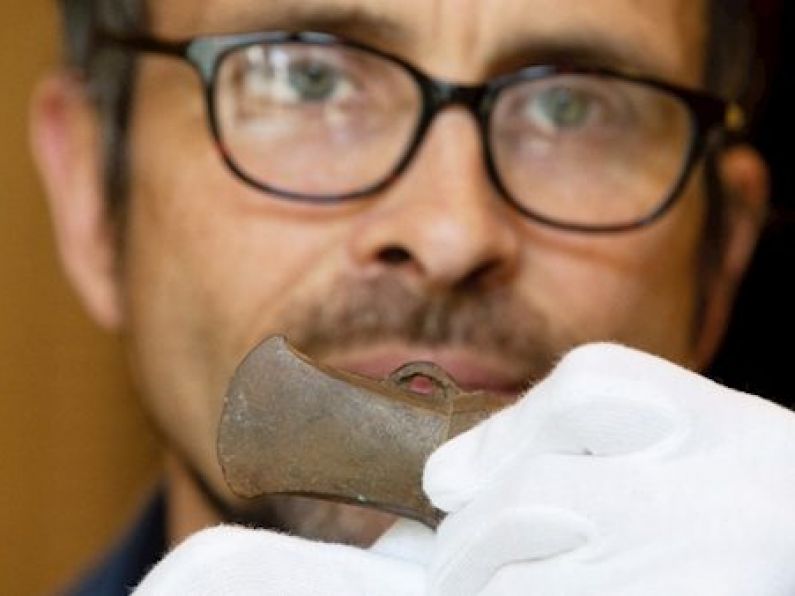A miniature Bronze Age axe has been recovered in Co Limerick by Gardaí and the National Museum of Ireland.
The artefact, which dates to approximately 1000-800 BC, was identified on a social media post by a member of the public who contacted Gardaí.
It is understood that it was dug up illegally in Adare by people using metal detectors and it was not reported to the National Museum, as is required under law.
A file is now being prepared for the DPP.
The National Museum says it is a matter of "grave concern" that people are using metal detectors illegally to search for archaeological objects and they are appealing to the public to be vigilant in reporting discoveries of such items.
“The moment artefacts of archaeological significance are taken from the ground they are under threat of deterioration and it’s also critical for our staff to study the ‘find spot’ because it can provide important evidence, both about the item and the area in which it was discovered," said Lynn Scarff, Director of the National Museum.
Therefore, it’s a matter of grave concern for us that the illegal use of metal detectors to search for archaeological objects continues and we want to appeal to members of the public to consider the greater public interest and the importance of these items to our national heritage, and to report any finds of note to us.
Detective Superintendent Ken Keelan, Garda National Bureau of Criminal Investigation said: “An Garda Síochána’s Arts and Antiques Unit based at the Garda National Bureau of Criminal Investigation works closely with the National Museum of Ireland regarding investigations into the recovery of objects under the National Monuments Acts.
"The case highlighted is the currently the subject of an ongoing Garda investigation and a file is being prepared for the Director of Public Prosecutions.
"Gardaí would again remind people of their legal obligations and requirements under the National Monuments Act, 1930 - 2014."






